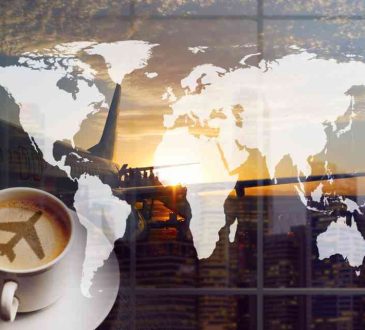Countries With Their Signature Drinks From Around the World

Foodies, beverage connoisseurs, and average diners who are curious about the world’s signature refreshments will appreciate taking the time to know what the world has to offer. Various countries take pride in the different kinds of spirits, wines, sodas, and beer they manufacture for local consumption and export. Interestingly, every country has a drink that represents itself, defining its location, people, and culture. Nations produce their beverages, which locals and visitors enthusiastically enjoy. These drinks can be alcoholic or non-alcoholic.
For example, Muslim countries make non-alcoholic beverages, which draw tourists of the Islamic faith. Meanwhile, countries with expansive wineries and distilleries such as Italy and Germany lure visitors who love wine and other alcoholic drinks. In this informative article, CEOWorld Magazine features a list of 35 territories’ signature beverages. The publication’s researchers reviewed several sources such as the countries’ tourism department websites and magazines about the alcoholic beverage industry and pop culture.
The drinks featured in CEOWorld Magazine’s list cater to various kinds of readers who love different kinds of beverages such as heartwarming herbal tea, strong fruit brandy, different beer variations, refreshing sodas, or other satisfying and relaxing thirst-quenchers. Here are the well-known beverages from 35 countries:
- Argentina: Mate
Mate is Argentina’s national beverage, which it shares with South American countries Paraguay and Uruguay. This drink has been famous in much of the continent since the pre-Columbian era. Being a highly caffeinated herbal tea, Argentina’s mate makers use the holly plant’s dried leaves in concocting the refreshment. Mate drinkers use a metal straw to enjoy the popular beverage typically from a calabash gourd-made, bulb-shaped container. - Belarus: Byarozavik
Byarozavik is a traditional beverage from Belarus that has a mild lemon taste. This refreshing birch tree water is the same as coconut water in terms of micronutrient and electrolyte contents. Manufacturers of the Byarozavik use the birch tree’s mineral-rich juice usually gathered during springtime. - Belgium: Lambic beers
Lambic beer is a beverage that uniquely represents Belgium. Manufacturers of this wheat drink ferment wild yeasts that are only found in the Zenne Valley, a place close to Brussels. Lambic beer vendors use draughts to peddle the Belgian thirst-quencher. This beverage comes in different kinds. Framboise is lambic beer made from mashed raspberries. Faro is a fresh lambic drink, while macerated cherries are a notable ingredient of kriek. Finally, gueuze is lambic beer that is a mixture of the old and fresh beverages. - Brazil: Cachaça
Cachaça is Brazil’s pride. Across South America’s largest country, this drink’s producers abound, numbering about 40,000. Cachaça is rum’s relative and its makers distill fermented sugarcane juice. Furthermore, drink connoisseurs will find cachaça versions that have aged in tropical hardwood barrels enticing. The production’s bulk is white. This cachaça type is most popularly consumed by drinkers blending it with crushed mint and sugar in the caipirinha, which is the most renowned Brazilian cocktail. - Bulgaria: Rakia
Tourists visiting Bulgaria will enjoy this Southeastern European country’s food culture, especially its lucid and dry fruit brandy – the rakia. Archeological proofs demonstrate that this exotic beverage has been a Bulgarian staple since the 14th century. Rakia manufacturers distill different kinds of fruits like figs, apricots, pears, and plums to produce the delectable drink. In Bulgaria, rakia is frequently distilled in tiny quantities in private residences and produced commercially. - China: Baijiu
The world’s most famous liquor is Baijiu. This Chinese beverage is a lucid and strong alcoholic drink that is sometimes as robust as 120 proof. Baijiu makers distill this liquor from fermented sorghum and can use other grain types. With baijiu’s popularity, its international sales that are nearly completely within China have surpassed those of tequila, whisky, rum, vodka, and gin combined. - Colombia: Aguardiente
Aguardiente is widely available in Colombia, especially in the Andean region. This powerful spirited beverage is originally from Spain and its name is derived from the Spanish terms for “flaming” and “water.” Thus, when taken literally, Aguardiente means “firewater.” Manufacturers of this exotic Colombian drink ferment sugarcane cider and add anise flavor to complete the refreshment. Besides Colombia, Aguardiente is well-known in many other Latin American countries. - Czechia: Pilsner
Pilsner is a lager-style beverage that has a light gold hue. This drink is Czechia’s contribution to the global beer industry. Pilsner’s name is derived from Plzeň, the Czech city of the same name, and is known in German and English as Pilsen. Plzeň is where Pilsner Urquell, pilsner’s first-ever example, has been brewed since 1842. - Ethiopia: Tej
Ethiopia is the African continent’s largest producer of honey. With this country’s nature, its most popular beverage is the tej. This honey wine appears clouded and is the same as Northern Europe’s mead. However, manufacturers of Ethiopia’s tej flavor it with the leaves of the African plant gesho. - Fiji: Kava
Teetotaler tourists visiting Fiji will appreciate kava. This earthy drink is a bit bitter, yet it is alcohol-free. Kava makers use the ground roots of a certain pepper tree to produce this beverage which is also present in other South Pacific destinations. Drinkers typically experience a wholesome feeling, thanks to this Fijian thirst-quencher’s psychoactive features. - France: Pastis
Spirited beverage pastis is France’s iconic classic refreshment. In 1932, French industrialist Paul Ricard introduced this star anise-flavored drink as a replacement for the then-prohibited absinthe, the robust spirit distilled from different fresh herbs and neutral alcohol. Pastis is conventionally blended with water, which transforms it into a delicious milky yellow beverage. Although this French drink is linked to Provence, it is widely enjoyed in cafés all over France. - Germany: Lager beer
Lagers greatly define Germany’s food culture. In fact, a vast array of lager beers is present in this Western European nation where plenty of beer styles are manufactured and traded globally. In Germany, Beck’s is the most famous lager label. It is a German version of Czechia’s pilsner. Nevertheless, not all lager beers are pilsners as the latter tend to have more hops. - Greece: Retsina
Retsina is a popular drink from Greece. This wine has the Aleppo pine resin flavor. Concocting retsina hailed from the Ancient Greeks. When bottles and corks were not used yet, these people from the olden times closed two-handled clay pots or amphorae using resin to prevent air from coming in. The sticky sealing material gave its taste to the wine. Drinkers began to relish the retsina’s piney flavor when more efficient wine preservation methods were introduced. - Hungary: Pálinka
Tourists who love fruity beverages will enjoy the pálinka. This drink is the Hungarian version of the strong and lucid fruit brandies manufactured across Central and Eastern Europe. Pálinka makers use pears, plums, and apples to create this tasty drink. This beverage’s most popular variant is the barack pálinka, which is based on apricots. - India: Lassi
Explorers of the world’s food cultures are familiar with the mango lassi. This staple of Indian restaurant menus features mango pulp-flavored diluted yogurt. Another version of the lassi is the bhang lassi with cannabis. There are also lassis with rosewater and saffron flavors. - Ireland: Guinness Stout
Ireland’s best-selling alcoholic beverage is the world-famous Guinness stout. In 1759, makers of this drink concocted their first brew in Dublin. Visitors will discover that properly filling a glass with the Guinness stout from a tap is considered art. - Italy: Wine
Italy is the world’s largest wine producer, overtaking France and Spain. This European peninsula is where grapevines abundantly grow, making the Greeks describe it as wine land or “Oenotria.” In all of Italy’s 20 regions, there are manufacturers of this country’s signature drink. - Japan: Green tea
Japan is the world’s second-biggest green tea consumer after China. Approximately 80,000 tons of green tea leaves are brewed in this East Asian nation annually. These leaves are neither oxidized nor dried, like those for the oolong and black teas. Being a part of the Japanese culture, green teas are featured in traditional tea ceremonies. - Malta: Kinnie
Malta’s Kinnie is a carbonated drink made with bitter orange cider with a wormwood flavor. Wormwood is an herb type and a popular ingredient of absinthe. In 1952, local beverage and food company – Simonds Farsons Cisk – launched Kinnie in Malta to compete with the United States’ Coca-Cola. Since then, this drink has become the tiny island country’s national soda. - Martinique: Rhum agricole
In literal terms, rhum agricole means “agricultural rum.” This beverage is the signature alcoholic thirst-quencher of Martinique, a French territory in the eastern Caribbean Sea. Rhum agricole makers distill this drink from fermented sugarcane cider, similar to Brazil’s cachaça, instead of using molasses like most rums. Moreover, Martinique’s exotic drink is typically aged to become a fine spirit for sipping, similar to cognac. The French government granted an appellation d’origine contrôlée certification to rhum agricole like some French wines. This label identifies the drink being an agricultural product. The certification also indicates that rhum agricole’s processing and production stages are performed in a particular geographical location and using conventional and popular techniques. - Mexico: Tequila
Tequila is Mexico’s pride, created exclusively using the blue agave plant. Jalisco and parts of Tamaulipas, Guanajuato, Nayarit, and Michoacán are where this drink can be produced. Tequila’s origins can be traced back to the time the Spanish conquistadores introduced the distillation method to Mexico. By the 1600s, the agave juice’s concentration into hard beverages started to take place. Pre-Columbian people brewed this cider into a lightly alcoholic drink called pulque. - Morocco: Mint tea
Muslim tourists visiting Morocco will find this country’s mint tea a delicious refreshment. This sweet and green-colored drink comes with spearmint leaf flavor. Since the 1800s, Morocco’s mint tea has been a staple in the food cultures of the country and parts of North Africa. In social gatherings, Muslim people typically consume this replacement for alcoholic beverages. - The Netherlands: Jenever
Genever or jenever is everyday gin’s ancestor. This robust spirited beverage is the signature drink of The Netherlands and dates back to the 17th century or even a distant era in the past when a Dutch alchemist, Franciscus Sylvius, first concocted it. Jenever manufacturers add juniper berry flavor in making this drink. Making genever today involves two broad classifications. One category is called oude, or “old” in English, featuring different grain types and is sometimes aged using wood. Oude tastes like whisky. Meanwhile, jonge, or “young,” is based on neutral spirits created using sugar beets or grain and tastes like vodka. - Peru: Pisco
Peru’s national beverage is the grape brandy pisco. During the Age of Exploration in the 16th century, the Spaniards were the first to concoct this drink. Visitors will discover that a popular method of consuming pisco is in an alcoholic cocktail called pisco sour, and mixing it with bitters, egg whites, simple syrup, and lime juice. - Poland: Vodka
In Poland, vodka is the most popular alcoholic beverage. It originated in this Central European country in the 14th century and is manufactured and traded worldwide today. Tourists will feel awed when they discover potato vodka. This distinctive Polish specialty may be distilled using different grain types. - Portugal: Port
Port is a sweet red wine produced in Portugal’s stunning Douro Valley. This classification of wine is boosted with distilled spirits, making it more stable and growing its alcohol content. The port-making process was originally designed to ensure the wine’s freshness on its extensive sea journey to the United Kingdom. White and drier ports are available today. Additionally, vintage port is concocted only in the most optimum vintage years and aged in bottles for a long time. This version of Portugal’s signature drink is among the world’s best and finest wines. - Romania: Țuică
Clear, fruity țuică is a fiery brandy popular in the central and eastern parts of the European continent. Its makers use plums as the main ingredient. However, some țuică versions are aged in mulberry casks. This process yields Romania’s signature drink with a yellowish color. Meanwhile, a double-distilled version of țuică can achieve the 130-proof strength. - Russia: Vodka
Poland claimed that it is where vodka was first invented. However, Genoese merchants are said to be the people who introduced vodka to Russia at nearly the same period as the beverage’s initial Polish mention. The Russian people assert that they enhanced the recipe for vodka, which they consider their country’s signature drink, similar to Poland. Since the 1800s, the world-famous beverage has been the staple drink at all the Russian society’s levels. - Scotland: Scotch whisky
World-class spirit Scotch whisky is a Scottish pride. Manufacturers of this world-famous beverage of Scotland use unmalted grain or malted barley in its production. In most blended Scotch whiskies, these two ingredients are usually combined. Additionally, when making Scotch whisky, Scotland’s national drink is kept in oak barrels for at least three years. The premium ones are aged for 25 years or even longer. - Serbia: Šljivovica
Visiting Serbia is exciting, especially when discovering its local food culture. Tourists will relish the šljivovica, or slivovitz, the national beverage of this landlocked country at the crossroads of Central and Southeast Europe. Similar to Romania’s țuică, this lucid and robust fruit brandy is made from plums, which is Serbia’s national fruit. In the late 1800s, the first-ever distillation of the šljivovica happened. This exotic refreshment is described as “the queen of Serbian brandies.” - South Korea: Soju
Soju is a famous South Korean liquor. This distant cousin of China’s baijiu was initially produced in as early as the 1200s. Sweet potatoes, potatoes, and various grains are among the typical ingredients of soju. South Korea’s signature drink is different from other Asian spirits since its alcoholic content is not greater than that of wine. - Spain: Sangria
Spanish natives and visitors love the sangria, the most famous and common café refreshment in Spain. This wine punch is cooling and relaxing. There are many different sangria recipes. Nonetheless, making this beverage almost always involves red wine, often Rioja, and is improved with chopped berries, apples, peaches, and other fruits. Some sangria makers add a specific liqueur or brandy to enhance the refreshing drink. Today, there are sangria drinks made using white wine. - Turkey: Turkish coffee
Specially blended Turkish coffee is the most popular drink throughout Turkey. Its makers grind the beans, turning them into powder and adding water to complete the heartwarming beverage. Turkish coffeemakers use the ibrik container or cezve, which is a long-handled copper vessel, to boil the warm drink. In Turkey, fortune-tellers consume the coffee, then turn the cup onto a saucer and forecast the future based on the patterns the coffee grounds create. - United Kingdom: Tea
Tea is a drink that popularly represents the United Kingdom. This beverage is an important part of the country’s food and social cultures. The United Kingdom is among the world’s most massive tea consumers. Furthermore, plenty of the renowned tea manufacturers are British. On a typical day in the United Kingdom, people pour tea at regular intervals. The word “tea” also pertains to a snack or light meal that comprises finger sandwiches, pastries, and a cup of the smoking drink. - United States: Coca-Cola
Coca-Cola or Coke is the world’s famous drink. In 1886, this American breakthrough was invented by Confederate States Army veteran and pharmacist John Stith Pemberton in Atlanta, Georgia. Coke is a favorite beverage among US and international consumers. This sweet and refreshing carbonated drink is manufactured by the Coca-Cola Company and is made using kola nuts and coca leaves.
CEOWorld Magazine’s list of the 35 popular and must-try beverages that represent various nations shows that each country usually has a refreshing signature drink to offer locals and visitors. These products are made based on the nation’s culture, location, history, and other defining attributes. Visiting the featured nations is certainly exciting as tourists can find a refreshment they like in every destination they visit which enhances their food culture experiences.
Have you read?
These Are The Most-Produced Tanks in American History.
Revealed: The World’s Best Airline CEOs, 2023.
Here Are 29 Inspirational Women CEOs Making An Impact, 2023.
Countries With The Most Billionaires, 2023.
The Exclusive $100 Billion Club (And How They Made Their Fortune).
Africa’s Billionaires 2023: Who Are the Richest People in Africa?
Add CEOWORLD magazine to your Google News feed.
Follow CEOWORLD magazine headlines on: Google News, LinkedIn, Twitter, and Facebook.
This report/news/ranking/statistics has been prepared only for general guidance on matters of interest and does not constitute professional advice. You should not act upon the information contained in this publication without obtaining specific professional advice. No representation or warranty (express or implied) is given as to the accuracy or completeness of the information contained in this publication, and, to the extent permitted by law, CEOWORLD magazine does not accept or assume any liability, responsibility or duty of care for any consequences of you or anyone else acting, or refraining to act, in reliance on the information contained in this publication or for any decision based on it.
Copyright 2024 The CEOWORLD magazine. All rights reserved. This material (and any extract from it) must not be copied, redistributed or placed on any website, without CEOWORLD magazine' prior written consent. For media queries, please contact: info@ceoworld.biz
SUBSCRIBE NEWSLETTER








